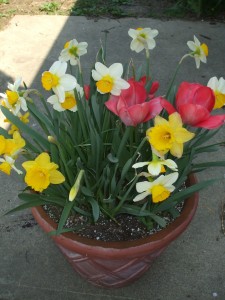
You know how we talk about winter hardiness and USDA Zones? The recent polar vortex provided an extreme test for many of our perennials, shrubs and trees.
The current USDA Plant Hardiness Zone Map places most of central Indiana in Zone 6a, where the extreme low temperature is minus 10. The old map had central Indiana in USDA Zone 5b, with the extreme low of minus 15 degrees. We were colder than either of those.
We can be grateful that we had snow on the ground when the big freeze hit. Snow is one of nature’s best insulators. It protects the roots of plants.
It will be spring before we know what plants were damaged by the extreme cold and wind. For trees and shrubs, we might see few or no leaves and some branch dieback on trees and shrubs. Perennials may not show up because the cold weather did them in.
Leftover spring bulbs
 With the clean up from the holidays, you may have uncovered a bag of spring-blooming bulbs. I’ll admit that this has happened to me more times than I care to count.
With the clean up from the holidays, you may have uncovered a bag of spring-blooming bulbs. I’ll admit that this has happened to me more times than I care to count.
Unfortunately, it’s too late to plant them in the ground.
I still had a bag of 25 tulips, so I potted them up in a large, all-weather container. I dug down about 6 inches, placed the tulips, covered them with soil and topped it off with a 2-inch layer of leaves for just a bit more insulation.
The pot is outdoors, subject to the polar vortex and whatever else nature throws at it. So far, the squirrels, which have been very active this winter, have not discovered the pot of tulips.
Try this with your own all-weather container if its soil is not frozen. Or, if you dumped your dirt, get a bag of potting mix at the garden center. If you don’t want to leave the container planted with bulbs outdoors, stow it in an unheated garage, or the coldest place in a heated one. Move outdoors when the leaves break ground and get about an inch high.